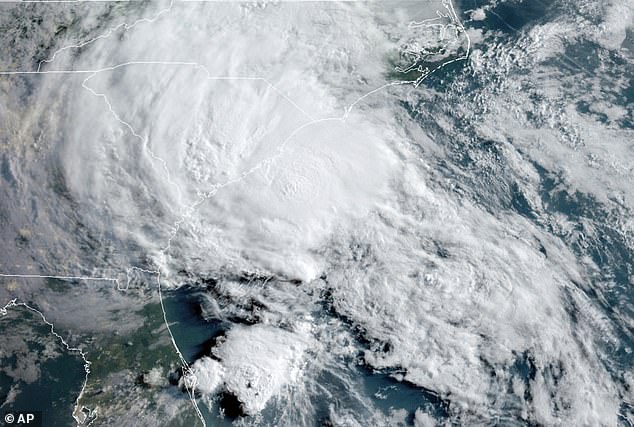Hurricane forecasters have issued the first storm warning of the year, as conditions off the coast of Central America could spawn a tropical depression.
AccuWeather sent out the advisory Wednesday morning, stating that its experts identified a low risk for tropical storm development in the Caribbean Sea and Pacific Ocean between May 15 and 22.
They report that a large, slow-spinning area in the atmosphere, known as a gyre, could develop around Central America, laying the foundation for a tropical depression or storm to form.
If a system does develop, it could bring heavy downpours as far north as South Florida.
The Atlantic hurricane season doesn’t officially begin until June 1. A tropical storm in May would mark an early start to what experts expect will be another active storm season.
Last month, scientists at Colorado State University (CSU) released their hurricane season forecast, predicting that nine hurricanes could impact the US this year.
Of those, four should reach ‘major’ strength (Category 3 to 5) with sustained winds of 111 miles per hour or greater.
This year, hurricane activity is expected to be about 25 percent higher than the average from 1991 to 2020. In 2024, it was about 30 percent higher than that average.

Hurricane forecasters have issued the first storm warning of the year, as conditions off the coast of Central America could send a tropical storm toward south Florida
The Central American Gyre forms seasonally, typically during the rainy season from May to November.
This overlaps with Atlantic hurricane season, and the gyre often creates conditions that are conducive to tropical cyclone development.
AccuWeather experts say that if the Central American Gyre takes shape this month, it would be ‘the best chance so far this year for the first named tropical storm of 2025.
‘We’re starting to get into that season where we need to kind of keep an eye out [in the Caribbean],’ AccuWeather lead hurricane expert Alex DaSilva said.
‘At the very least, a wetter pattern down across Central America and then up into the Western Caribbean is expected,’ he added.
If the gyre does trigger a tropical storm, it would likely track northeastward, crossing over Jamaica, Cuba and then heading out to see, DaSilva said.
‘Right now, it does not look like it would be heading towards the United States.’
But heavy rain could stretch as far north as South Florida and cause localized flooding across Central America, Jamaica, Cuba and other western Caribbean islands.

A large, slow-spinning area in the atmosphere, known as a gyre, could develop around Central America, laying the foundation for a tropical depression or storm to form

Heavy rain could stretch as far north as South Florida and cause localized flooding across Central America, Jamaica, Cuba and other western Caribbean islands
Whether such a storm actually develops will hinge on whether the gyre forms. And that depends on the jet stream.
‘Essentially, what’s happening is we’re going to be getting a dip in the jet stream to come down into the southeastern United States during the middle of May,’ DaSilva explained.
If this dip in the jet stream is strong enough, and reaches far south enough, it could cause the gyre to start spinning.
But at this time, the odds of tropical development are low.
Still, ‘we’re coming out of the winter season, so we want people to start transitioning their mindset into tropical mode as we headed to the end of May, because there could be something lurking down there in the middle to late portions of the month,’ DaSilva said.
Even though May is not technically part of Atlantic hurricane season, it’s not uncommon for tropical storms to kick up during this month.
Since 2015, there have only been four years when a tropical system did not spin up in May, according to AccuWeather.
This article was originally published by a www.dailymail.co.uk . Read the Original article here. .

